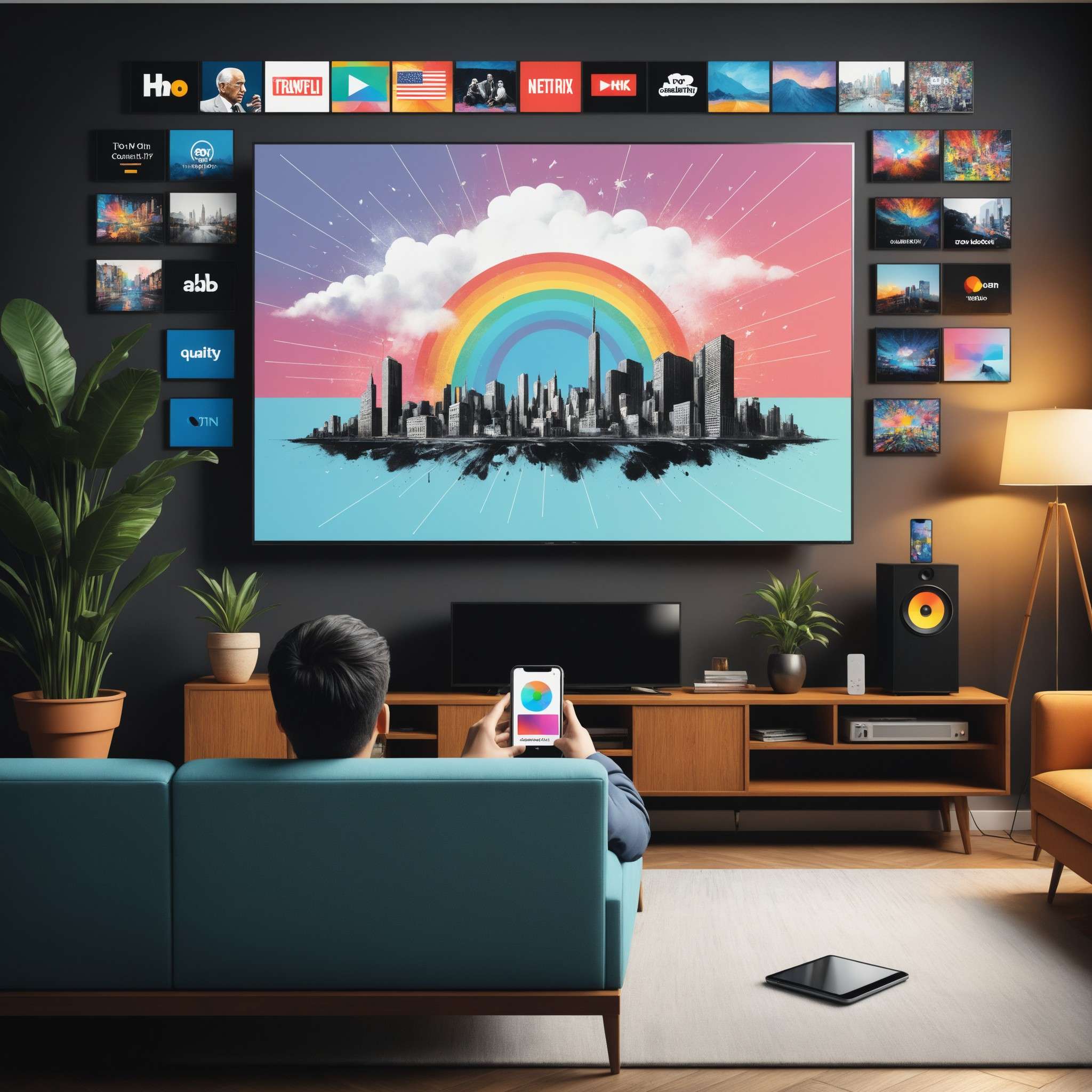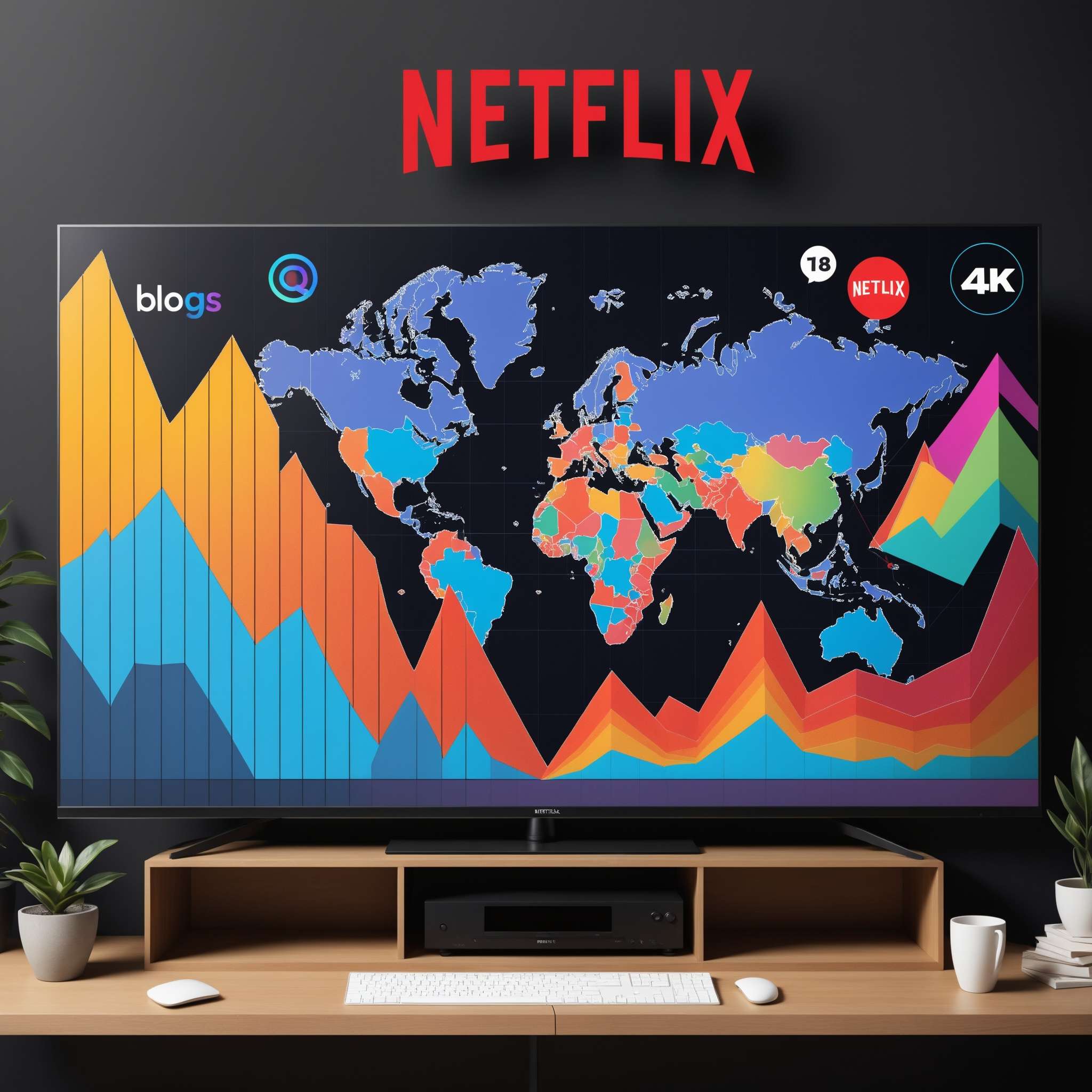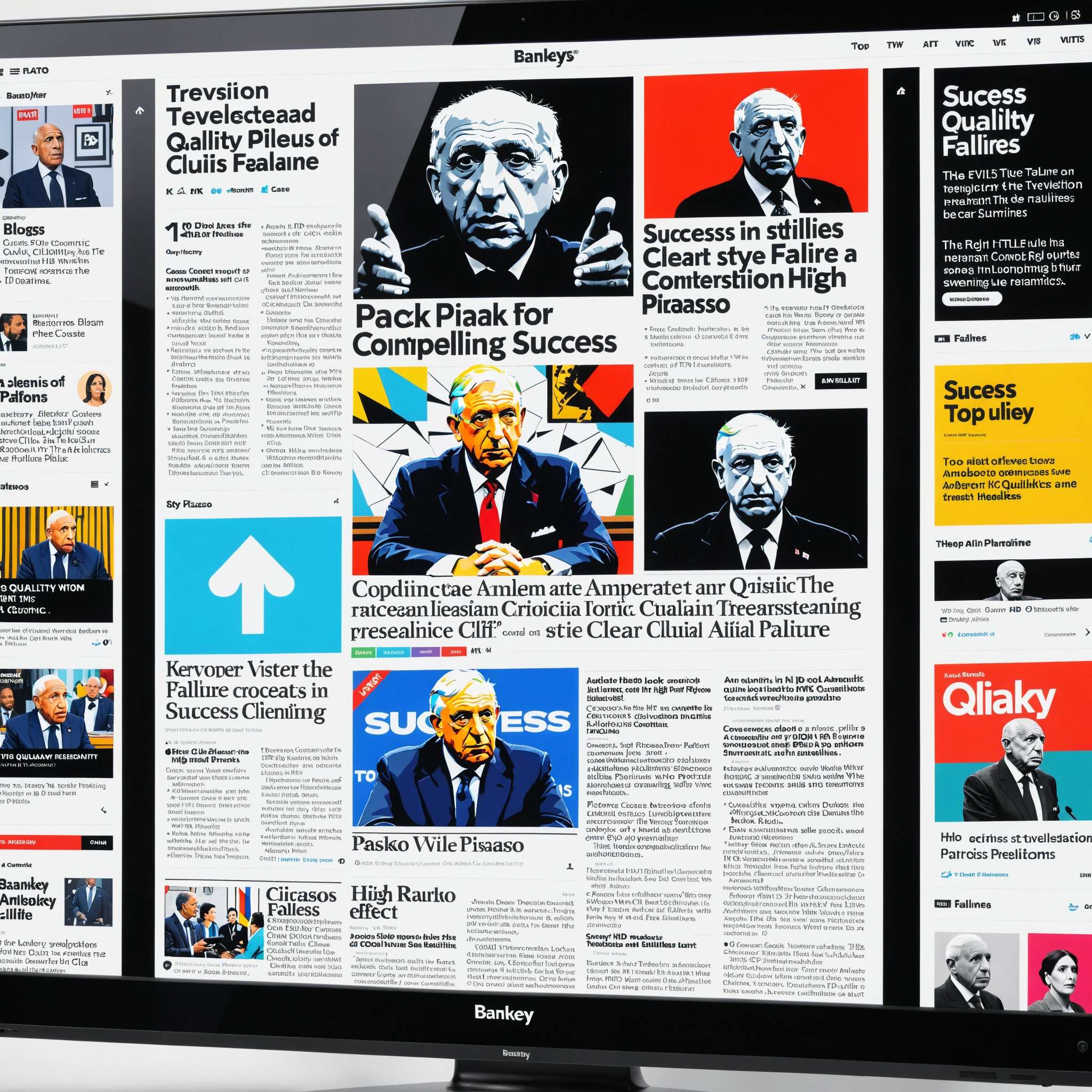Zombie Bunny is Reader-supported and may earn an affiliate commission through links on our site.

Streaming Platforms: The Silent Killers of Traditional Television?
Uncover the transformative effect of streaming platforms on television. Get insights into the evolution of entertainment. #StreamingvsTV #EntertainmentEvolution
Discover how the digital era, led by streaming giants like Netflix, Amazon Prime, and Disney+, has revolutionized television viewing in our latest blog. Trace the journey from antennas to on-demand streaming, and explore how this shift has impacted traditional broadcasters’ financial stability and advertising strategies. We delve into the success stories of streaming platforms, the struggles of traditional TV broadcasters, and predict the future of television in this engaging read. Understand how the convenience and personalization offered by streaming services are driving viewer preferences, and how traditional television can leverage its strengths to stay relevant in the digital age.
Introduction: From Antennas to Digital Era

© Copyright , ZombieBunny.Org
Brief overview of the blog content
The dawn of the digital age has transformed the way we consume media, with streaming platforms taking center stage. This blog post delves into the seismic shift from traditional television to these digital platforms. We’ll trace the journey from the nostalgic era of antennas and scheduled programming to the modern era of on-demand streaming. The focus lies on understanding how platforms like Netflix, Amazon Prime, and Disney+ have disrupted the television landscape. We aim to provide an insightful examination of the impact this shift has had on traditional broadcasters, and how their dwindling viewership is affecting their financial stability and advertising strategies. Through a series of compelling case studies, we will explore the successes and struggles in this changing landscape. Finally, we’ll gaze into the crystal ball to predict the future of television, laying out potential opportunities and challenges that lie ahead in this streaming versus traditional TV debate.
Historical view on television’s evolution
The story of television is a tale of continuous evolution. The early days were marked by rabbit-ear antennas and black-and-white broadcasts, a stark contrast to today’s high-definition, full-color spectrum. Families would gather around the television set, planning their evenings based on the broadcast schedule. As technology advanced, the introduction of cable and satellite television expanded the programming options exponentially, providing viewers with more choices. The advent of the digital age brought about another leap in television’s evolution. The internet initiated a paradigm shift in the medium’s consumption. Instead of being tied to a schedule or a physical location, viewers could now watch their favorite shows anytime, anywhere. The arrival of streaming platforms has further accelerated this shift, providing an on-demand, personalized viewing experience. This transformation, from antennas to streaming, is a testament to how technology has reshaped the television landscape.
Introduction to the concept of streaming platforms
Streaming platforms, the driving force behind the current media revolution, have emerged as a modern alternative to traditional television. These digital platforms provide an on-demand, internet-based media service that allows users to consume content at their convenience. Be it movies, TV shows, or documentaries, these platforms have a wide array of content, catering to diverse tastes. Streaming services like Netflix, Amazon Prime, Disney+, and Hulu have established themselves as major players in the entertainment industry. They’ve revolutionized the way we watch TV, providing an ad-free, binge-watching experience that viewers love. The most significant shift is the control given to viewers, who can now dictate what they watch, when they watch it, and on what device. This level of personalization, coupled with the convenience of streaming anywhere with internet access, has propelled the rise of these platforms, reshaping the traditional television landscape.
The Rise of Streaming Platforms

© Copyright , ZombieBunny.Org
The surge in popularity of streaming platforms
In the past decade, streaming platforms have seen a meteoric rise in popularity. The convenience of on-demand viewing, coupled with an extensive library of content, has driven an increasing number of viewers towards these digital platforms. The ability to consume media wherever and whenever one wants, without being tied down by a broadcast schedule, has made streaming an attractive choice for many. Moreover, the proliferation of smart devices and improved internet connectivity have made streaming more accessible than ever before. The COVID-19 pandemic further accelerated this shift, with stay-at-home measures leading to a surge in streaming subscriptions. Netflix, one of the pioneers in this field, alone added over 37 million subscribers in 2020. This demonstrates the growing preference for these platforms and the increasing willingness of viewers to pay for high-quality, ad-free, and personalized content. This surge in popularity suggests that streaming platforms are here to stay, transforming the face of television as we know it.
Major players in the streaming market
The streaming market, while still relatively young, is dominated by several key players. Netflix, a pioneer of streaming, boasts a vast content library and a global subscriber base. It continues to set the bar high with critically acclaimed original shows and films. Amazon Prime Video, another significant player, leverages its e-commerce synergies to offer a compelling service that includes not only video streaming but also benefits like expedited shipping and music streaming. Disney+, a relatively new entrant, has made waves with its impressive catalog of Disney, Pixar, Marvel, and Star Wars content. Hulu, primarily catering to the U.S market, stands out with its blend of original content, network TV shows, and live TV option. HBO Max and Apple TV+ have also joined the fray, banking on their premium content to attract subscribers. Each platform offers unique selling propositions, contributing to the dynamic and competitive nature of the streaming market.
Consumer preferences shifting towards streaming
Consumer preferences are rapidly shifting towards streaming platforms. One of the primary reasons is the convenience and control these services offer. Viewers can watch their favorite shows and movies anytime, anywhere, and on any device with internet connectivity. The rise of binge-watching culture, fueled by the release of entire seasons at once, is another factor driving this shift. Moreover, streaming platforms provide a more personalized experience, using algorithms to recommend content based on viewing habits. This level of personalization is unmatched by traditional television. Also, the absence of commercial interruptions in most streaming services significantly enhances the viewing experience. Lastly, the original content produced by these platforms has been a game-changer. High-quality shows and movies, which often rival or even surpass traditional production studios, have become a significant draw for subscribers. These factors contribute to the increasing preference for streaming over traditional television, further driving the growth of these digital platforms.
Impact on Traditional Television

© Copyright , ZombieBunny.Org
Decreasing viewership of traditional television
As streaming platforms continue to rise, traditional television is witnessing a significant decline in its viewership. The fixed schedules, commercial interruptions, and lack of personalization that define traditional TV are increasingly being seen as outdated in a world accustomed to on-demand, customizable content. A report by Nielsen shows that traditional TV viewership has been steadily dropping over the past few years. The decline is particularly pronounced among younger demographics, with many millennials and Gen Z viewers opting for streaming services over traditional TV. These younger viewers value the flexibility, control, and variety of content that streaming platforms provide. The trend is not limited to the younger audience, as even older demographics are starting to make the shift, drawn by the convenience and quality content offered by these platforms. This decreasing viewership is a clear indicator of the challenges traditional television faces in the era of streaming.
Financial implications for traditional TV broadcasters
The declining viewership of traditional television has significant financial implications for broadcasters. Advertising has been the primary revenue source for these broadcasters, and fewer viewers mean less advertising revenue. As more advertisers shift their budgets towards digital platforms with better targeting capabilities, the financial strain on traditional TV broadcasters intensifies. Moreover, the high costs associated with producing and broadcasting content further strain their finances. As viewership declines, broadcasters are faced with the challenge of maintaining the quality of their content while managing these high costs. Additionally, the rise of cord-cutting – viewers cancelling their cable or satellite subscriptions in favor of streaming services – is another financial blow to traditional broadcasters. This trend is further exacerbated by the fact that many streaming platforms are ad-free, providing a more appealing viewing experience. As these financial challenges mount, traditional TV broadcasters are being forced to rethink their strategies to stay relevant in the digital era.
Change in advertising strategies
The rise of streaming platforms and the subsequent decline of traditional television viewership have necessitated a significant change in advertising strategies. In the past, advertisers relied heavily on TV commercials to reach a broad audience. However, with the shift in viewership towards on-demand, largely ad-free platforms, these traditional advertising methods are losing their effectiveness. Consequently, advertisers are increasingly shifting their budgets towards digital platforms. These platforms offer better targeting capabilities, allowing advertisers to reach specific demographics with personalized ads, resulting in a higher return on investment. Additionally, product placements within shows and movies on streaming platforms are becoming a popular advertising strategy. Even traditional broadcasters are exploring ways to make advertising less intrusive, such as integrating ads within the content or offering ad-free premium subscriptions. These changes in advertising strategies reflect the ongoing transition from traditional television to digital streaming platforms.
Case Studies: Success Stories and Failures

© Copyright , ZombieBunny.Org
Success stories from streaming platforms
Streaming platforms have seen a multitude of success stories. Netflix, the pioneer in the streaming market, has been a standout performer. Its success lies not just in its extensive content library, but also in its original productions. Shows like “Stranger Things” and “The Crown” have garnered critical acclaim, driving subscriptions and solidifying Netflix’s position in the industry. Disney+, despite being a relatively new entrant, has also marked a successful entry. Its subscriber count skyrocketed, reaching over 100 million subscribers within a year of its launch, largely driven by its rich content catalog featuring beloved franchises. Amazon Prime Video’s success story is another testament to the power of streaming. Its strategy of bundling video streaming with other benefits like expedited shipping has helped it amass a significant subscriber base. These success stories underline the growth potential of streaming platforms and their transformative impact on the television landscape.
Failures and struggles of traditional TV broadcasters
While streaming platforms have been enjoying success, traditional TV broadcasters have been grappling with challenges. One notable failure was the decline of Blockbuster, once a giant in the home video and television industry. Unable to adapt to the changing landscape, it was eventually eclipsed by Netflix, a company it once had the chance to buy. Cable companies, too, have been struggling with the trend of cord-cutting, losing millions of subscribers each year to streaming services. Broadcasters like ABC, CBS, and NBC have also witnessed decreasing viewership and ad revenues. Even attempts to launch their own streaming services have met with limited success, as they struggle to compete with the content variety and global reach of established platforms. These struggles underscore the difficulties traditional broadcasters face in adapting to the new digital era, and the urgent need for them to evolve to stay relevant.
Adaptation and survival strategies
In the face of the streaming revolution, traditional broadcasters are exploring various adaptation and survival strategies. One popular strategy is launching their own streaming services. CBS All Access, now Paramount+, and NBC’s Peacock are examples of this approach. These platforms offer a mix of on-demand content and live TV, seeking to combine the best of both worlds. Another strategy is partnering with existing streaming platforms. For instance, many broadcasters have licensed their content to platforms like Netflix and Amazon Prime Video. This allows them to tap into the streaming market while still benefiting from their existing content libraries. Some are also experimenting with new advertising models to make ads less intrusive and more personalized. Despite these strategies, the transition has been challenging, and the survival of traditional broadcasters remains uncertain. These efforts, however, highlight their determination to adapt to the changing landscape and stay relevant in the age of streaming.
Conclusion: The Future of Television

© Copyright , ZombieBunny.Org
Predictions for the future of television
The future of television lies in the digital realm, and the trend towards streaming shows no signs of slowing down. As technology continues to advance, streaming platforms will become even more accessible and personalized. Artificial Intelligence will play a significant role in enhancing personalized recommendations, making the viewing experience even more tailored to individual preferences. Additionally, the boundaries between television and other forms of digital media will continue to blur, with social media and streaming converging to create more interactive and immersive experiences. The rise of virtual reality and augmented reality technologies could also revolutionize the way we consume TV, opening up possibilities for truly immersive viewing experiences. While traditional broadcasters may face challenges, they also have opportunities to evolve and adapt to this new landscape. The future of television is undoubtedly exciting, and viewers can look forward to a more personalized, interactive, and immersive viewing experience.
Potential opportunities for traditional TV
Despite the challenges posed by the rise of streaming platforms, there are still potential opportunities for traditional TV. Live events such as sports, news, and award shows continue to draw viewers, offering a unique value proposition that streaming platforms can’t replicate. By focusing on these strengths, traditional broadcasters can carve out a niche for themselves. Also, the vast content libraries that traditional broadcasters possess can be leveraged more effectively. Content licensing to streaming platforms or launching their own streaming services can open up new revenue streams. Furthermore, traditional broadcasters can explore partnerships with technology companies to enhance their digital offerings. Finally, the growth of connected TV provides an opportunity for traditional broadcasters to deliver more targeted and personalized ads, bridging the gap between traditional and digital advertising. While the road ahead is challenging, these opportunities offer a glimmer of hope for traditional broadcasters in the digital era.
Final thoughts on the streaming vs traditional TV debate
The debate between streaming and traditional television is a testament to the rapidly evolving media landscape. Streaming platforms have undoubtedly disrupted the television industry, offering a level of convenience, personalization, and control that traditional TV has struggled to match. However, this doesn’t necessarily spell the end for traditional television. Live programming, local content, and the trust and familiarity associated with established broadcasters are still valuable assets. The key for traditional broadcasters lies in leveraging these strengths, while also adapting to the digital age. This could involve developing their own on-demand services, forging strategic partnerships, or transforming their advertising strategies. Ultimately, the future may not be a question of streaming versus traditional TV, but rather a hybrid model that combines the best aspects of both. In this ever-changing landscape, one thing is certain – viewers stand to benefit from the increased choices, enhanced viewing experiences, and innovative content that this competition brings.
Please support our site and purchase something from our store.







